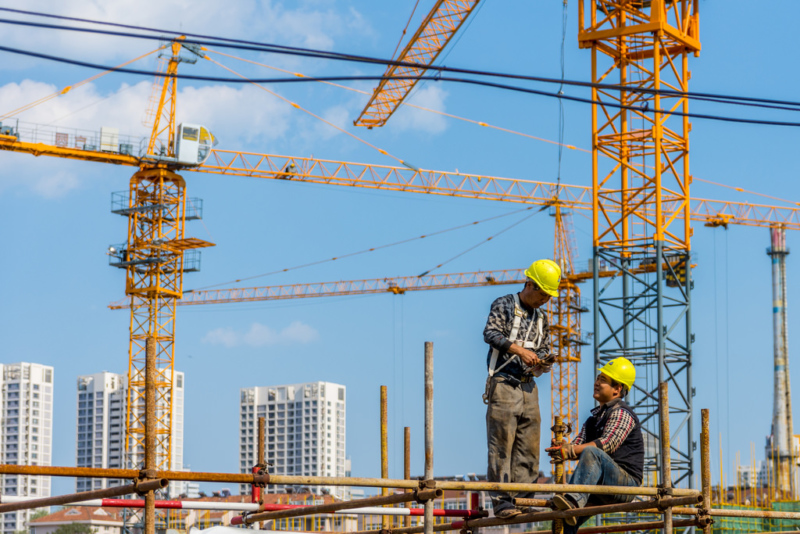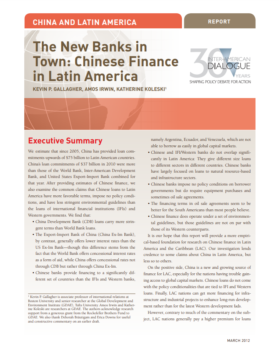The Belt and Road Initiative (BRI) has evolved considerably since its inception in 2013, from an effort to reinvigorate Silk Road connectivity to something of a catchall for Chinese foreign policy, as Belt and Road cooperation agreements are signed across the globe and Chinese trade and investment—big and small—advances under the initiative’s banner. Though excluded from the BRI in its earliest phases, the Latin American and Caribbean (LAC) region was recently designated as a potential destination for Belt and Road investors. However, the extent to which LAC stands to benefit from enhanced Chinese engagement will depend more on the region’s capacity for policy coordination and strategic planning than on its official inclusion in the initiative.
Backed by the Silk Road Fund, China’s policy banks (China Development Bank and China Export-Import Bank), and the Asian Infrastructure Bank, the BRI is the signature foreign policy initiative of Chinese President Xi Jinping, and one with wide-ranging economic, diplomatic, and geopolitical aims. The initiative imagines the development of a multitrillion-dollar web of infrastructure projects across Asia, Africa, and Europe, primarily to promote trade and other forms of connectivity while improving prospects for economic development among partner nations. Over the past five years or so, the project has evolved from a focus on two specific geographical routes—an overland Silk Road Economic Belt and a sea-based Twenty-First-Century Maritime Silk Road—toward an increasingly global endeavor. BRI principles are now applicable even in the Arctic region, according to China’s Arctic Policy, released in 2018.
Much like the Arctic, LAC was only recently included in the BRI’s growing ambit. But despite the region’s relative distance, both geographically and conceptually, from the BRI, Latin American leaders and diplomats have sought inclusion in the initiative ever since Belt and Road first came into being.
As far back as 2015, Bolivia’s ambassador to China stated that the BRI is “extremely important to Bolivia’s future development.” Shortly thereafter, Peru’s former foreign minister and ambassador to China, Gonzalo Gutiérrez Reinel, published an article in People’s Daily expressing Peru’s hope that the Belt and Road would be extended to Latin America. Around the same time, Peru’s ambassador to China, Juan Carlos Capuñay, published an article in which he described the BRI’s orientation as “promoting mutual reliance, economic complementarity, and technology transfers between China and Latin America,” as well as “connecting the both the Atlantic and the Pacific,” concluding that the BRI would be an important measure in Peru’s economic development. And in 2016, Ecuador’s ambassador to China, José Borja, went so far as to credit the BRI with having already boosted Ecuador’s trade to the Asian region.
More recently, Chile’s ambassador to China, Jorge Heine, praised the initiative’s intent to unite the world through infrastructure and called on Latin America to join. Former Argentine Foreign Minister Susana Malcorra was similarly quoted as saying that the initiative is “a crucial multilateral integration project that goes beyond the traditional Silk Road to reach Latin America,” and, in a meeting with Chinese Foreign Minister Wang Yi, that Argentina “is willing to actively participate in the building of the Belt and Road.”
The precise impact of these and other efforts to link LAC and the BRI is impossible to measure, but recent moves by Beijing appear to have heeded Latin American calls.China still refrains from formally including the LAC region on its BRI maps, but has gone to some lengths in recent months to extend the BRI framework across the Pacific. In May 2017, for example, the Chinese president called the Latin American region “a natural extension of the Maritime Silk Road” in a meeting with Argentine President Mauricio Macri, while he attended the Belt and Road Forum in Beijing. The region was also called an “important participant” in the BRI by Foreign Minister Wang Yi during the 2018 China-CELAC Ministerial Forum.
Chinese officials have also highlighted a few Latin American countries as participants in the BRI. Mexico was singled out as an “important node” in the initiative’s extension during the September 2017 BRICS Summit. Panama became a “natural extension” of the BRI during Wang Yi’s visit to the Central American nation. Also, Panama, Trinidad and Tobago, Antigua and Barbuda, and Bolivia are among the approximately seventy countries to have signed Belt and Road Cooperation Agreements with China, with more expected to sign on in the coming months.
Growing reference to Latin America and the BRI is also the result of the initiative’s own conceptual transformation. Initially billed as a synthesis of the Silk Road Economic Belt and Twenty-First-Century Maritime Silk Road, with five main routes traversing Asia and Eastern Europe, the BRI has since evolved into what Chinese officials describe as a geographically inclusive platform.
Yet, despite growing Chinese interest in extending the BRI to Latin America, and sustained enthusiasm in LAC about this prospect, it is unclear what, if anything, stronger LAC ties to the BRI will do for the region.
Latin America could possibly attract more state-backed finance from China as a result of BRI linkages, but the region has already received approximately $140 billion in disbursements since 2005, according to the Inter-American Dialogue’s China–Latin America Finance Database. And while countries such as Argentina and Brazil might benefit from new infrastructure financing (e.g., Macri and Xi reportedly signed $17 billion worth of deals in May 2017), the debts incurred by LAC’s major Chinese loan recipients are already staggering.
In any case, many of China’s proposed infrastructure projects in LAC already resemble BRI initiatives. Though delayed in some cases, projects such as the Montero Bulo Bulo Railway in Bolivia, the Bi-Oceanic Railway in Peru and Brazil, the Belgrano Cargas Railway in Argentina, and the trans-Pacific fiber optic cable in Chile would appear to achieve the sorts of infrastructure linkages promoted within the BRI’s stated “five links” (wutong), regardless of the region’s formal inclusion in the initiative. The remaining four links (policy coordination, trade facilitation, financial integration, and cultural and social exchange) are also already being carried out through investments and diplomatic initiatives.
As it stands, the benefits that LAC derives from ties to the BRI will depend more on the region’s capacity to think strategically and collaboratively about regional infrastructure development than on an official BRI designation.
Although some Latin American countries have approached Chinese banks and companies with well-developed plans for domestic infrastructure projects, regional and even subregional strategies are generally lacking. One important exception is the Iniciativa para la Integración de la Infraestructura Regional Suramericana (IIRSA), which was conceived during a meeting of Latin American leaders in Brasilia in 2000, and has since taken steps to support regional infrastructure development. But IIRSA’s progress has been limited for a number of years by financing and coordination-related challenges.
The initiative has also been criticized for its perceived lack of environmental consideration. For example, the environmental organization International Rivers has claimed that IIRSA’s Madeira–Mamoré–Beni–Madre de Dios hydroelectric dam and hidrovía project could permit the expansion of soybean cultivation on more than 74,000 square kilometers in and around the Amazon rain forest.
It stands to reason that many of China’s proposed infrastructure projects, including some that were originally considered by IIRSA (such as the Bi-Oceanic Railway), could face similar obstacles. Bi-Oceanic Railway planners recently organized a series of meetings among Peruvian, Brazilian, and Bolivian officials, but a lack of coordination between Brazil and Peru, along with political shifts in both countries, have delayed the project indefinitely.
As Zuo Pin of the Shanghai International Studies University noted in Chinese journal Guoji Guancha in 2015, whether it’s part of the BRI or not, Latin America is a difficult investment environment, and will continue to present challenges for Chinese investors. In addition to LAC’s distance from China, which some investors view as prohibitive, some countries’ regulatory environments and bidding processes are seen as exceedingly complex or taxing, especially by China’s small and medium-size enterprises.
Chinese-built infrastructure can indeed be a boon for Latin America, especially as the region seeks to address its critical deficit. But making this happen will require no shortage of strategic thinking on the part of policymakers. To fully benefit from the BRI, Latin American countries must create the conditions necessary to attract Chinese investors while ensuring that projects are demand-driven and promote long-term, responsible, and sustainable economic growth.
 龙龙 HJTVU / Flickr / CC BY 2.0
龙龙 HJTVU / Flickr / CC BY 2.0
